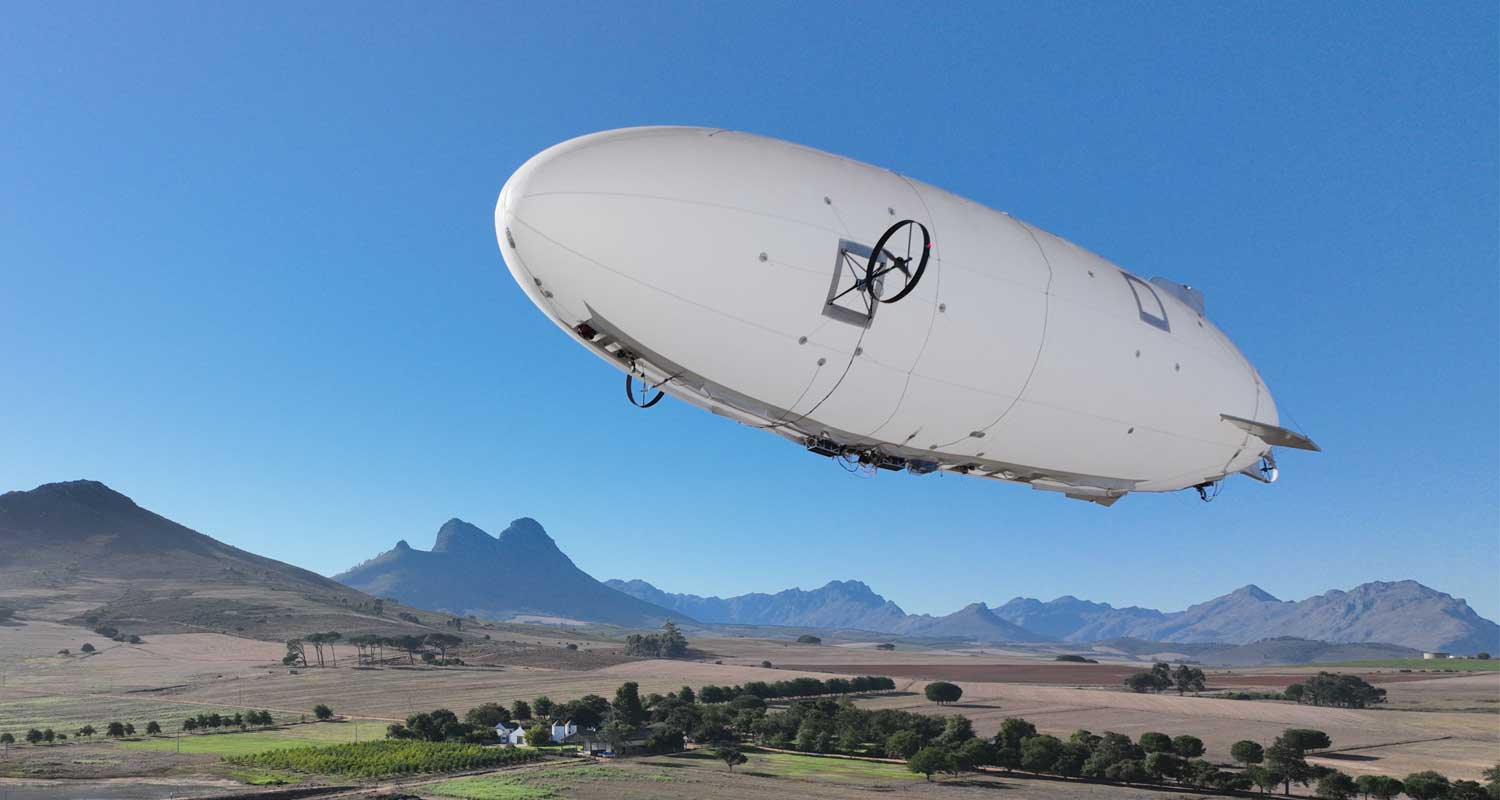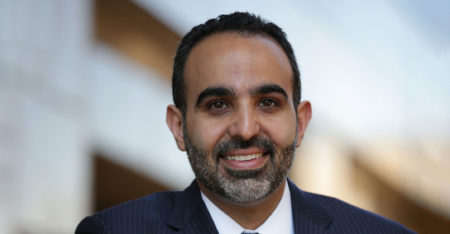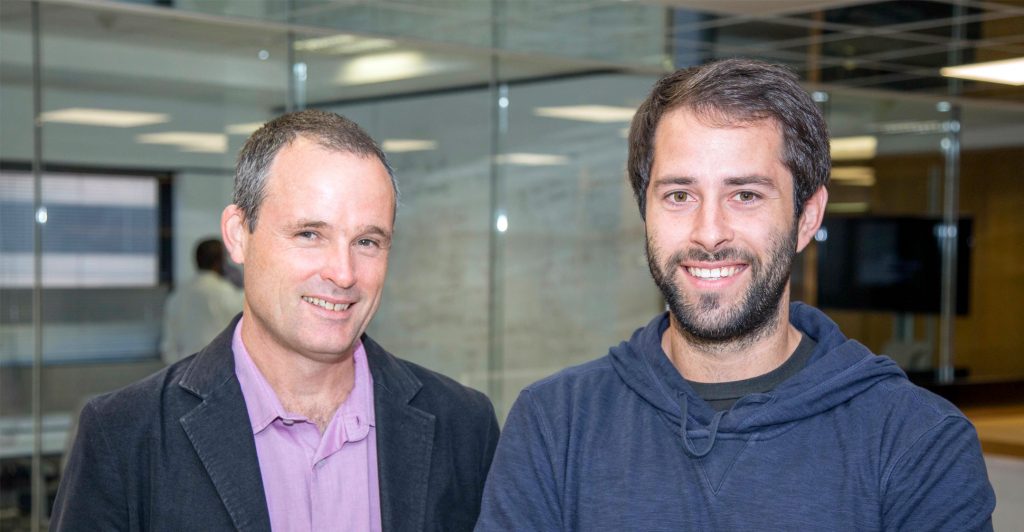 A battery and solar-powered airship built to survey farms and collect data, deliver samples and medication to remote areas in Africa, and conduct inspections of power lines and pylons seems so obvious one wonders why it hasn’t been done before.
A battery and solar-powered airship built to survey farms and collect data, deliver samples and medication to remote areas in Africa, and conduct inspections of power lines and pylons seems so obvious one wonders why it hasn’t been done before.
Cloudline is an aerospace company based in Stellenbosch building autonomous airships that aim to deliver goods and services across the globe.
The company was founded by Spencer Horne, a South African who grew up in Kuils River and graduated with a BSc in mechanical engineering from Harvard.
Back home in the Western Cape, Horne identified the infrastructural gaps that exist in Africa and saw a massive opportunity in logistics, specifically logistics to “reach the bottom billion”.
Having travelled in remote parts of Africa, Spencer realised that without direct access to ports, tarred roads or runways, people in rural areas suffer from severe economic exclusion. He recognised that access to essential goods could transform these communities by connecting isolated communities to global supply chains – and the idea of the autonomous airship was born.
4Di Capital, an early-stage venture capital firm based in Cape Town, recently earmarked US$25-million (R423-million) for a seed fund specifically for tech start-ups, following an initial close of $8-million from the SA SME Fund. The fund focuses on businesses showing continental or global ambitions.
No energy
Cloudline’s unmanned aerial vehicles use no energy to remain aloft and thus act more independently than drones, which are really just an extension of the person using them, and whose batteries have to be changed every 20 minutes. The airship uses helium as a lifting gas and can be operated from a central control room. The ships also make for carbon-free aviation as they use battery and solar-powered propulsion and will manage a payload of up to 100kg.
Their range of over 400km is also far greater than conventional drones, and they can set off on a predetermined path for over 12 hours.
“This means they can be used in many different cases,” Horne told TechCentral. “They can be sent into inaccessible places where it is really expensive to send helicopters or aeroplanes, and they also have the added function of being able to capture data in these areas.
“Getting anything into the air in general is difficult, and also expensive. Putting conventional aircraft in the air comes at a high capital cost, and keeping them there comes at a very high energy cost. But at the heart of the technology we’ve developed, we address those two major barriers to more widespread use of the air for getting things done.”
Horne sees the role data has played in transforming precision agriculture as very important, whether to analyse crop yields or to increase the cost-effectiveness of crop management strategies such as fertiliser inputs, irrigation patterns and pesticide application.
The airships also have a role to play in monitoring powerlines and pylons, which according to regulations have to be inspected every two years. “An airship is a brilliant substitute for helicopters, for instance, which cost upwards of US$2 000/hour. Or in California, where many powerlines are situated in areas of dense vegetation and are often difficult to reach, often resulting in devastating forest fires.”
The airships have taken some time to develop but are now certified for use by South African Civil Aviation Authority. What remains is securing permission for commercial projects already in the pipeline. The United Nations Children’s Fund, for instance, will use the airships to reach far-flung centres in Namibia that are difficult to access. “Pick up and delivery of diagnostic tools and samples is challenging in clinics that are cut off from roads, and we are awaiting final regulatory permissions from the Namibian government for this project.”
Similarly, at Lake Victoria in Kenya – where the airship made its first flight there two weeks ago – medical applications are vital in an area with few roads, and Horne said the company is also hoping to expand there soon.
In South Africa, security monitoring – of railway lines, electricity substations and telecommunications base stations, for example – seems to be a natural progression.
The whole thing can be packed up in a suitcase and checked in as baggage on an airliner
Justin Stanford, co-founder and general partner at 4Di, which invested in Cloudline, said the company has secured regulatory approval in South Africa and Namibia to deploy the autonomous unmanned airships, which he described as “a very tall order and major achievement which normally takes years”.
The regulatory approvals were “particularly complex given there was no pre-existing category into which to place this essentially new type of aircraft”.
“These three countries are where the first commercial deployments are planned. The first two fully operational aircraft are already registered, with callsigns ZT-XNR and V5-A068,” Stanford said.
The specs of the autonomous airships
Max speed: 32 knots
Cruise speed: 20 knots
Payload capacity: Up to 40kg
Battery-only endurance in econo cruise at 15 knots: 2.5 hours
Battery-only endurance in loiter at up to 10 knots: 8 hours
Solar-powered endurance at cruise speed: 10+ hours (potential for up to multi-day/night missions)
Range with solar power: >370km
Maximum headwind in cruise: 18 knots
Maximum wind at take-off/landing in VTOL mode: 15 knots
Cost factor: Up to 10 times lower operating costs than current UAV and manned aircraft solutions
The performance of the airships compares favourably with conventional drones and manned aircraft, and the airship can be deployed almost anywhere to remote locations with essentially no infrastructure required, at very low cost. The whole thing can be packed up in a suitcase and checked in as baggage on an airliner, in fact. This makes it rather unique in what it can do, and at such a low cost.
“This small and young team is doing something exciting on the world stage in a global market, solving tough aeronautical engineering challenges — resulting in a unique creation that seeks to solve challenges that exist abundantly not only in Africa, but also all around the world.” — © 2023 NewsCentral Media




